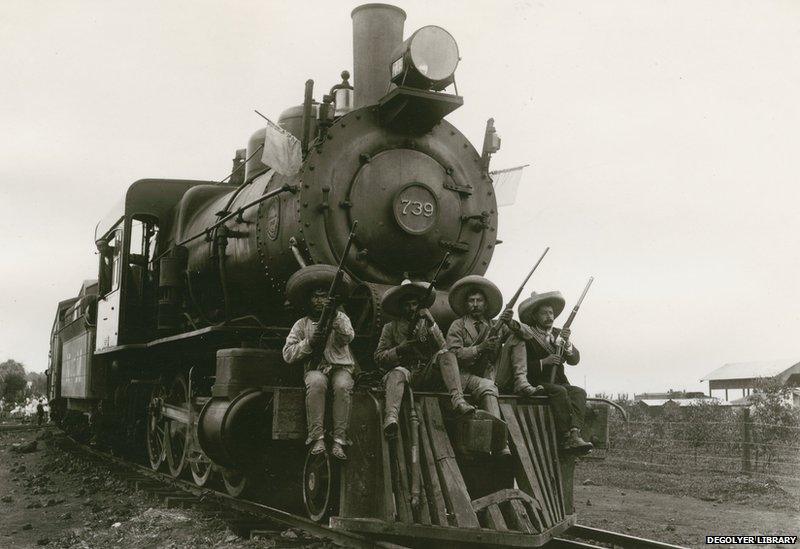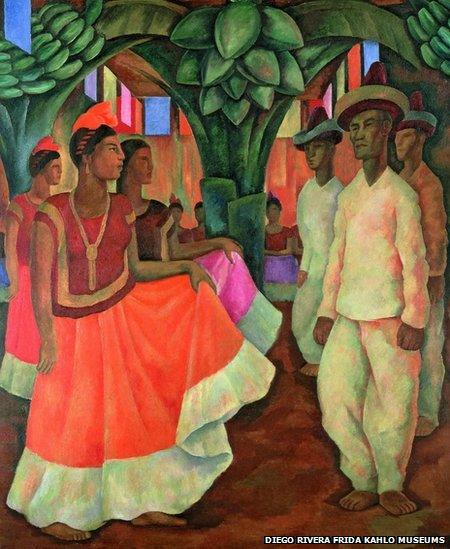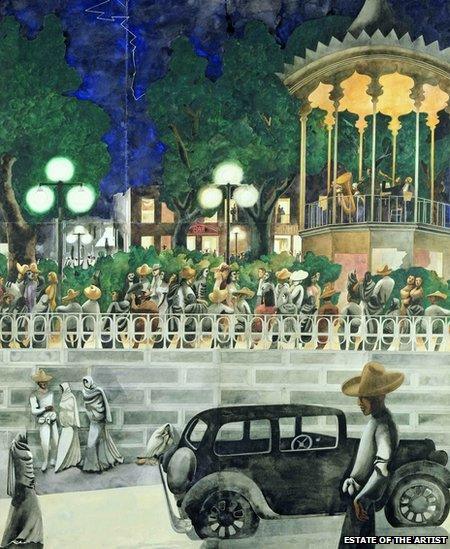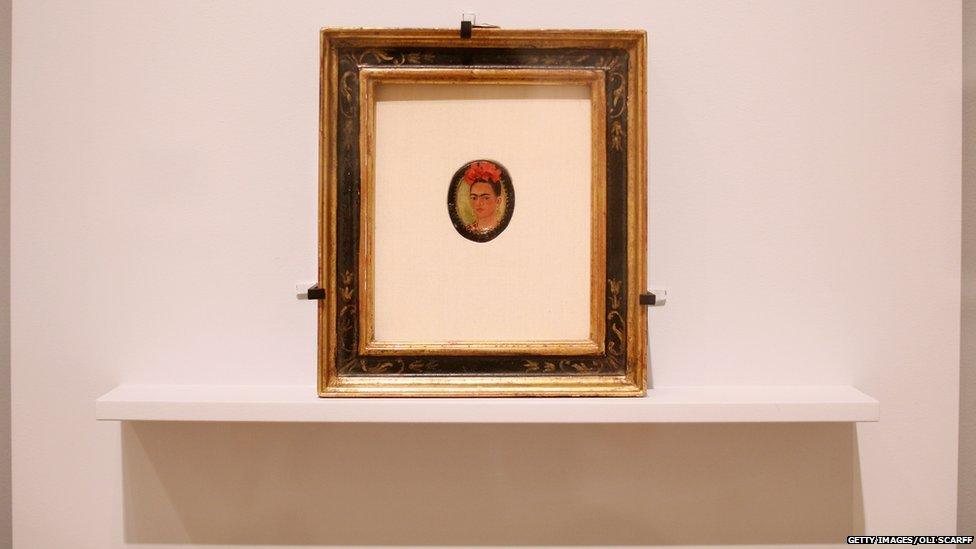In pictures: Mexico's revolutionary art
- Published

A new exhibition at the Royal Academy in London traces the explosion in artistic creativity that accompanied one of the most turbulent periods in Mexico's history, which began with revolution in 1910 and rumbled on to presidential elections in 1940.

From 1910 to 1920, Mexico was plunged into a convulsive series of wars. Iconic figures like Pancho Villa (pictured, on a postcard), who led a northern rebellion, and Emiliano Zapata, who fought in the south, rose to positions of power. Villa and Zapata, like many of their comrades, met violent deaths.

During the 1920s, a liberalising government took power and instituted a public art programme that kick-started the Mexican muralism movement. Artists like Roberto Montenegro (Mayan Women, pictured) were early leading lights, before the movement became more overtly political.

Established artists like Diego Rivera (Dance in Tehuantepec, pictured), who had made his name in Europe, returned to his homeland to take part in the government scheme, generating a cultural revival.

Foreign artists and writers flocked to Mexico, which they regarded as an unspoilt country. The British painter Edward Burra (El Paseo, pictured) visited in 1937 but failed to adapt to the climate and diet, having to flee to the US to recover from a bout of dysentery. He painted his Mexican works at home in Rye, south of London.

In 1940 Mexico elected a new president and its culture was celebrated with the Twenty Centuries of Mexican Art exhibition in New York. Rivera was displayed along with Jose Chavez Morado (Carnaval en Huejotzingo, pictured), in what was seen as the clearest recognition of the country's artistic revival.

The Royal Academy exhibition, displaying 120 paintings, photographs and etchings, runs to 9 September. Its final image is the smallest painting produced by perhaps the most famous of all the Mexican artists of the period, Frida Kahlo. The tiny picture, created as a love token, is entitled Self-Portrait.